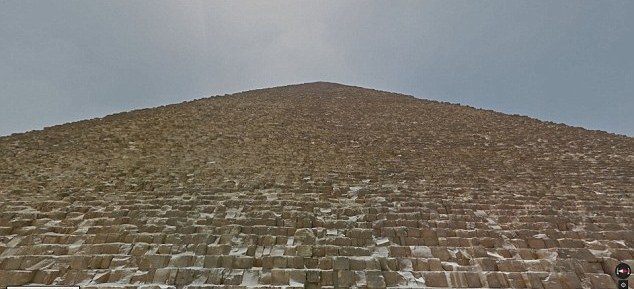The Great Pyramid was built for a famous Pharaoh over 4,000 years ago and is the only one of the Seven Ancient Wonders to have survived the test of time.
The pharaoh was none other than Khufu; he heavily invested in the Great Pyramid, overseeing the project for 20 years during construction.
Pharaoh Khufu was a ruler who demanded nothing but perfection in architecture, science, and religion.
This meant that it was crucial for The Great Pyramid of Giza to be perfectly built.
It was important that Khufu’s giant pyramid stand the test of time because he wanted his burial grounds to be eternal.

To the dead pharaoh’s dismay, along with that of the rest of the world, it looks like the pyramids might not actually be able to last forever; archaeologists now believe the Great Pyramid is a tad bit wobbly.
Researchers discovered this during an investigation of the Egyptian pyramid. An error has been found inside of the glorious construction that has left the Western side of the giant tower a slight bit larger than its neighboring Eastern side.
Sadly, as the team excitedly measured the base, they found the pyramid wasn’t a perfect square. This means that the Great Pyramid isn’t as lopsided as the leaning tower of Pisa, but stands a little crooked nonetheless.
After a very close inspection of the pyramid, the team found that an error in the construction has left the western side a little long.
The team discovered this by tracing the boundaries of the casing stones. Even though these stones are important, only a few of them can be seen today, making up about 54 meters of the pyramid’s total 920-meter border.
The remainder of the stones have been heavily damaged by weather and even chipped throughout the ages.
The original edge pieces are both easily noticeable and incredibly valuable due to the fact that they are poking out from where the original edge would have been.

Luckily, archaeologists found eighty-four points along the periphery of the original baseline from the Great Pyramid, allowing them to get a line of best fit. This allowed the original baseline of the world’s most iconic grave to be traced.
After the survey of the Great Pyramid was completed, the surveyors found their statistics to have a 95 percent probability that the baseline fell inside of two small lines.
This allowed the team of engineers to have certainty in the integrity of the original outer casing of the Pyramid.
All of this basically means that from the number of visible points along the Great Pyramid’s outer perimeter, the team of experts were able to create a very accurate line.
The team of super nerds then estimated that the overall average length of all of the sides of the pyramid’s outer shell was 230.363 meters, with the diagonals resulting from the corner of the Great Pyramid to be practically right angles.
Inspecting the finest details of this Great Wonder lead to the discovery of the tiny error – an inconsistency of 14.9 centimeters.
Despite the imperfections, researchers say it still displays impressively accurate attention to detail. The Pyramid was incredibly well built, leaving modern-day archaeologists in awe of the impressive accuracy of the construction.
This leaves us nowhere closer to discovering how Ancient Egypt built their durable pyramids over 4,000 years before electricity was discovered, but it’s interesting to know that even these ancient geniuses could live with a little bit of imperfection.;
